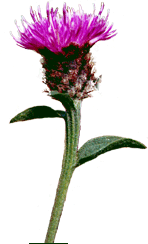Nicolas DASSONVILLE, Basile HERPIGNY and Pierre MEERTS
Alien invasive plants represent an important dimension of global change. In NW Europe, a number of
alien species are rapidly spreading (Fallopia japonica, Senecio inaequidens, Solidago gigantea, Impatiens glandulifera, Prunus serotina, Heracleum mantegazzianum, Rosa rugosa). It is suspected that these species have profound impacts on soil chemical properties and ecosystem functioning.
We examine the impacts of these species on organic matter cycling. This include litterbags experiments in situ, assessment of change in the composition of soil animal communitites, and alterations in nitrogen mineralisation due to changes in the soil microbe communties.
We also test if other components of global change, specifically eutrophication, may enhance the invasive capacity and impacts of alien invasive species. This is studied in cultivation in semi-controlled conditions.
An important study case are Japanese knotweeds (Fallopia div. taxa). Different taxa are spreading in Belgium. We compare functional traits of a representative sample of genotypes in order to test if differences in invasive capacity among them might be due to differences in some ecophysiological attributes, including specific leaf area, shoot architecture, nitrogen economy and phenotypic plasticity.
This research is supported by the Fonds de la recherche scientifique (FRS/FNRS) (FRFC project in collaboration with ULg-Gembloux AgroBioTech, Lab. of Ecology) and the Belgian Science Policy (Science for a Sustainable Development, Project Alien Impact, in collboration with UA, VUB, UCL and ULg-Gembloux AgroBioTech).
 accès campus
accès campus
 bacheliers (liste des formations)
bacheliers (liste des formations)
 contacts
contacts
 formation continue
formation continue
 la recherche à l'ulb
la recherche à l'ulb
 musées de l'ULB
musées de l'ULB
 service communication
service communication
 actualités de l'ULB
actualités de l'ULB
 calendriers
calendriers
 documents officiels
documents officiels
 hôpitaux universitaires
hôpitaux universitaires
 les débats de l'ULB
les débats de l'ULB
 plan langues
plan langues
 soutenez l'ULB
soutenez l'ULB














 École interfacultaire de bioingénieurs
École interfacultaire de bioingénieurs L'ULB sur Facebook
L'ULB sur Facebook L'ULB sur Twitter
L'ULB sur Twitter L'ULB sur Instagram
L'ULB sur Instagram ULB TV
ULB TV L'ULB sur Scoop.it
L'ULB sur Scoop.it L'ULB en tant qu'entreprise
L'ULB en tant qu'entreprise Le flux RSS de l'ULB
Le flux RSS de l'ULB Les Facultés et Services de l'ULB
Les Facultés et Services de l'ULB


